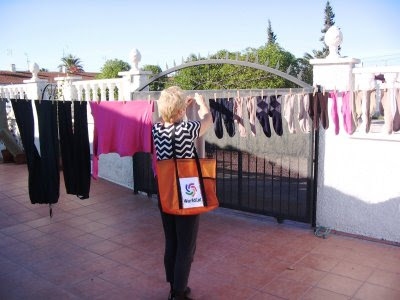The special draw, however, was the intimate flamenco show, done only on weekends, and due to start at 9:00. What we didn't know was that the show would not be traditional flamenco, but "contemporary flamenco," or flamenco contemporaneo. The announcer told us this as he introduced the two dancers. They were proud of the flamenco tradition, he said, but young Spaniards preferred it a little bit different, and that's what we were going to hear and see tonight.
Flamenco originated in the Andalusian part of Spain, with heavy gypsy influence, and is traditionally characterized by three elements: guitar music, emotional songs (often mournful), and the very colorful and heavily stylized dance.The first difference this evening was that there was no live guitar player. The dancing couple were accompanied throughout by recorded music. And it was not the blaring, wailing songs on which so many gypsy flamencos are based. First up, and quite appropriately,was Frank Sinatra's My Way. True, it was not Frank singing--the words were in Spanish, though I didn't recognize any phrases as direct translations of the words I knew. But the music is powerful, and so was the dancing, All the body whirling and twirling of the skirt was still there, as well as the stomping and posturing, but with just a little less attitude than one might expect from flamenco or even this particular song.
It was over too quickly, but the evening star had come out, the moon was moving toward full, and the clock was approaching midnight. I've checked Google and found lots of information under flamenco contemporaneo and even some under "contemporary flamenco." If the performance we saw was a true indication, the contemporary movement is preserving and reinterpreting many of the best elements of flamenco, but opening it up to many more dance traditions and making it much more international, as Spain itself is becoming.



